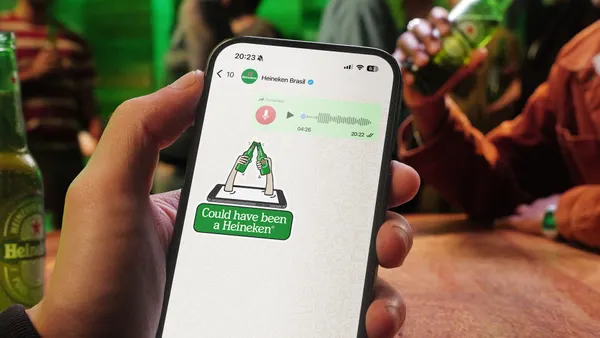The following is a guest post from Lauren Farricker, director of data strategy and consumer insights at Kiip.
When done right, the application of targeting data to marketing efforts is a pathway to creating a true value exchange between brands and consumers. But if the marketing industry is to restore consumer faith in its practices — after a long, hard year of GDPR headlines and "duopoly" data scandals — brands need to do more than talk about this value exchange. They need to leverage their data for good in an authentic way.
Mobile targeting has come a long way in the past few years, and brands are more empowered than ever before to use mobile targeting capabilities for good. These enhanced targeting capabilities come at a time when brands' corporate social responsibility efforts are at an all-time high. Many brands are building their reputations as respected community players that wield their substantial resources for the good of others, not just their own bottom lines.
Consider the Ikea foundation, which has given $2.3 million to bring clean electricity to a combined 1 million people in India and East Africa. Or the Ben & Jerry's Foundation, which awards more than $1.8 million per year to fund community action, social change and other sustainability initiatives throughout the U.S. Or Budweiser, which partners with the American Red Cross for disaster relief efforts and donates millions of cans of clean drinking water to areas ravaged by hurricanes and other natural disasters. These companies know that doing good is good business, and their corporate social responsibility (CSR) efforts have gone a long way in the hearts and minds of consumers.
Brands today have the opportunity to get more personal with their CSR efforts by leveraging mobile targeting data to not just advertise to consumers, but to be a true partner when consumers need it most. In doing so, they can demonstrate their good intentions and opportunities for value exchange inherent in their use of responsibly collected consumer data.
The use of mobile data for good can take many shapes, and it's useful to think of such initiatives as falling on a spectrum between CSR and corporate messaging. In times of disaster and true need, such efforts might fall wholly into the realm of public service. On a day-to-day basis, however, mobile targeting can still be used for good by providing useful messaging and value at the right time and place. Consider these examples:
Natural disasters
When a hurricane or major storm bears down on a region, a battery brand could leverage weather data to reach known mobile users in the affected area with a PSA about the upcoming storm, a preparedness checklist and a deep discount on batteries in preparation for possible power outages. In the case of a severe storm landing, the company could leverage mobile location data to direct affected users to relief shelters or pickup locations where donated batteries are available for free.
Life stages
Based on a combination of various mobile data points, a paint company could identify people undergoing major life transitions such as marriage, buying a new home or having a baby. Depending on the life stage, a company could provide valuable information and life hacks an individual may need to allay stress during certain points in their life, or even a personalization tool to help the individual share their news with their social networks (e.g., easily generated wedding party invites, address change notifications or baby announcements). Helpful on-brand inclusions in messaging might include discounts on paint supplies or tips for redecorating a room.
Wellness
Although brands should steer clear of any mobile targeting that might suggest knowledge of private medical needs, there's still an opportunity for brands to be of service to consumers during peak times of health concern. A couch syrup brand could combine seasonal information during cold and flu season with known information about high-risk mobile users — perhaps people with children or those who frequent public transportation hubs — to reach out with valuable health and wellness, as well discounts on cold medication. Similarly, an allergy medicine brand could leverage known seasonal information and weather data to predict spikes in regional allergy behavior and reach out in advance to alert mobile users to high pollen counts.
The above are just a few examples of ways in which brands can use mobile targeting to provide help and value at the times and places that people are most in need. By shifting the focus from how mobile targeting can be used to benefit a brand to how it can be used to benefit the consumer, marketers can take a massive step forward when it comes to perceptions of how companies are making use of people's data. It's time for marketers to stop talking about the value exchange they provide consumers in exchange for their data. It's time to show them.












